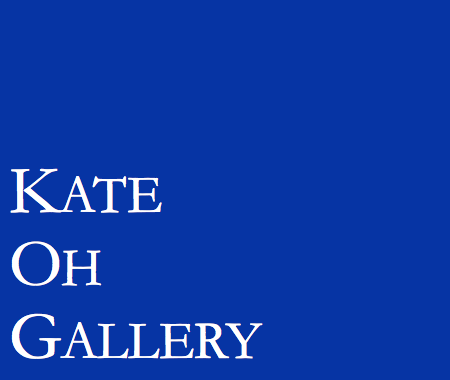Emptying and Filling
Kwan Jin Oh
January 1 to January 14, 2020 (by RSVP only)
(RSVP only: RSVP to info@kateohgallery.com)
Kate Oh Gallery is delighted to present its first show of 2020, “Emptying and Filling”, a special solo exhibition by Kwan Jin Oh. Mr. Oh is a well-renowned artist based in Korea known for his moon jar paintings. The exhibition will feature the artist’s unique practice that reinterprets the Korean art genre by combining shading with realistic expressionism. Instead of using ink, the artist applies a cutting and pasting technique to create vivid images and merges the ceramic inlay method to deliver maximum dimensional aspects to viewers. Mr. Oh explores the beauty and vitality of porcelain, including the form and sense of the subject matter, with excellent photo-quality expressions.
A moon jar is meticulously and realistically rendered on a white background consisting of ultimate lifelike details such as marks and cracks outlining the rim as a result of the fateful resistance against fire. The background also depicts a surrealistic world featuring flower blossoms and cherry tumbles. The painting is a reflection of the artist’s metaphor as he struggles to extend his art into a new dimension that travels between oriental and western art.
BIO
Mr. Oh earned his BFA at Hongik University and MFA at Dong Guk University in South Korea. He participated in over 30 solo exhibitions and major group shows. Mr. Oh has exhibited his work at the Jang Eun Sun Gallery; HANWONMUSEUM; ARTO Art fair CENTUM HOTEL; Maekyung Media Center; Myungdong Gallery; The Shrine of Art (4 times); Dan Won Art Gallery; Paris La Defense; Japan Dong Hwa Ji Gallery; Jong-ro Gallery (2 times); La Mer Gallery; Kwan Hun Gallery; Han Seon Gallery; Municipal GongPyung Art Gallery; and the Byuk Gang Gallery. His awards and grants include the Special Prize at Korea Grand Art Fair; Award for excellence at Korea Grand Art Fair; Grand Prize at Asia Grand Art Fair; and the Grand Prize at KyungHyang Housing Art Fair. He has also won awards at international art fairs in Japan and Russia. Mr. Oh has also conducted lectures at Hongik University, Dae Jin University, Cheong Kang University, Chang Won University, Shin Hung University, Hoseo University, Kyung Min University, Baek Seok University. Currently, he serves as a member of the Korea Art Association and Korea Character Designers Association, Councilor of PISA international animation, Director of International Art Exchange, and Chief of Korean Art at GyeWon Art High School.
Two early examples of Korean art from the Stone Age include votive deposits (such as ideographs) and petroglyphs, both of which engage with the sacred and the mystical. In the latter example, of Korean petroglyphs, the Bungudae petroglyphs are some of the most significant, located on the vertical rockcliffs along the riverside of the Daegokcheon stream, a branch of the Taehwa River that runs eastward and joins the East Sea at Ulsan. Coated in the Buddhist aura of replication and duplication, with generative motifs and repeating patterns, the votive offerings often culled supernatural forces, such as the multiplying image of the Buddha and the passage of variegated sacred texts. A carnal quality marks the rich history of Korean art, from images carved in stone to rubbings and seals; stencils on paper, silk and plastered walls all utilize the object-study to situate the memorial within a visual impasse. Recall how ritual implements such as bronze rattles and decorative accessories—gold crowns and flaxen belts with antler-shaped appendices or curved jade pendants, known as kogoh—were excavated from Bronze Age tombs. Kwan Jin Oh's meditative and reinterpretive works situate this quotational practice by taking ceramic images and rendering them across flat surfaces.
The ornamental and ceremonial history of Korean art remains an active, albeit mediated, category in contemporary works such as Kwan Jin Oh’s mixed-media works. While Westerners perhaps first became aware of Korean art in the late nineteenth century, largely by collecting Korean ceramics, works such as Oh’s recall a much more complex visual culture where such vessels extend beyond decorative artefaction. Indeed, what is most striking in Kate Oh Gallery's "Emptying and Filling" is exactly how Kwan Jin Oh recalls this rich history by mediating ancient historic indices within contemporary media, lulling his viewers with delicately placed serpentine cracks—bridges, veins, rivers and torrents scatter the porcelain fissures. In these mixed media pieces, the moon and sun are not regarded as diametric oppositions but held within dialectic exchange. Cast together and flattened, Oh’s canvases wed the bulbous sun with the cold brooding moon, manifest in orb-like porcelain vestiges. Often circuitous branches appear as well, slipping out of porcelain mouths, crooning towards the heavens—an extension of the river-fractures. While Oh is undoubtedly a contemporary artist, highly celebrated in Korea, his mottled historical play and engagement with the mystical situates these works with the rich history of Korean visual culture.
-Ekin Erkan

